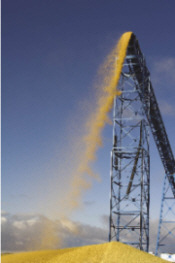



Ethanomics Unleashed
US - The diversion of U.S. corn from food to biofuel production is shaking the poultry industry. What's ahead? |
| Four factors will exert downward pressure on corn prices over the next few years. |
Rarely in the course of an industry has a sea change as large occurred as the "food or fuel" debate today sweeping across the agrifood industry. Until very recently, agriculture had a single focus producing an abundant supply of healthy, high-quality food. A huge new market the production of natural alternatives to high-cost fossil fuels generally located in politically unstable parts of the world is creating the biggest shift in this industry since the dawn of the green revolution fifty years ago. For those aligned with the poultry industry, we all will wrestle with how this change impacts our businesses.
We define biofuels broadly as the production of alternatives to traditional energy sources such as gasoline, diesel fuel, coal and natural gas using natural, renewable carbon sources. The feedstock (carbon source) can range from traditional food and feed crops (such as corn and soybeans) to byproducts or biomass (wood chips and switchgrass). Ethanol is of course the first, and by far the largest, biofuel under development and is having the greatest impact on the poultry industry.
Like any commodity business, ethanol is driven by economics. Ethanol economics are driven by three primary costs the market cost (value) of ethanol in gasoline, the cost of converting corn to ethanol, and the raw material cost for feedstock, usually corn. Unfortunately, estimating the future course of development for the ethanol industry requires one to simultaneously estimate the direction of all three of these costs.
Market Value Of Ethanol
The core economics of global oil dramatically impact the economics of biofuels. Over the long term, the economics of oil seem very favorable to the biofuels industry, but not without some bumps in the road. The oil crisis in the 1970s was caused by a supply squeeze, and prices inevitably retreated when supplies expanded. In the ethanol space, very aggressive ethanol capacity expansions over the next few years will essentially double U.S. ethanol production from 4 billion to 8 billion gallons. We will be shocked if this tidal wave of new capacity at some point over the next two years doesn't result in some significant ethanol price erosion.
Source: WattPoultry











